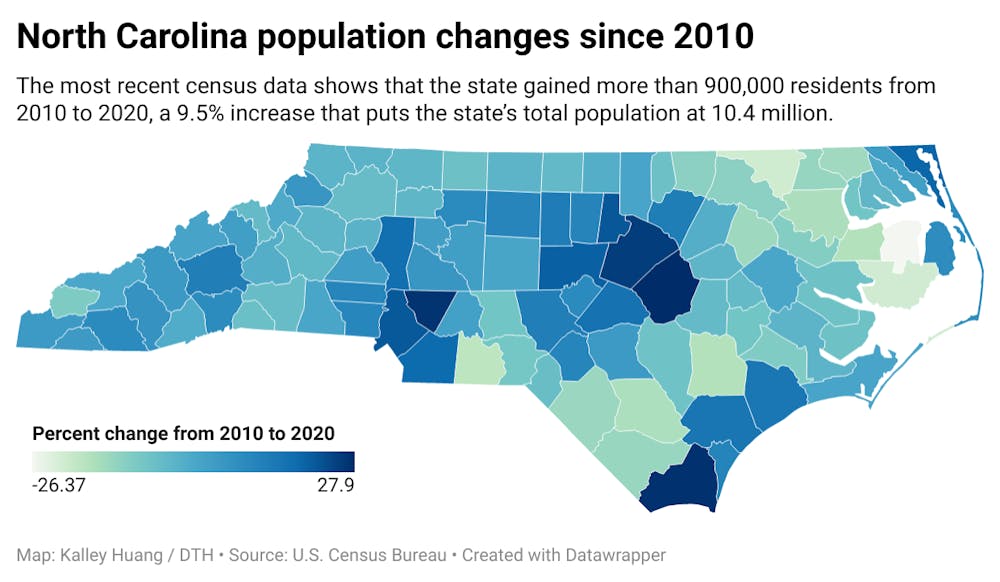Chapel Hill’s population grew by almost 5,000 over the past decade, the result of a boom in racial and ethnic diversity. The increase has contributed to the rapid growth in the Research Triangle that is driving North Carolina’s rise in population.
These numbers will be the basis for how political representation is allotted statewide for the next 10 years.
Since 2010, North Carolina has gained more than 900,000 residents, a 9.5 percent increase that puts the state’s total population at 10.4 million. A majority of the state’s new residents are people of color, according to census data released Thursday.
In Chapel Hill, people of color are driving even more growth. The town’s population is now nearly 62,000, an 8.3 percent increase from 2010. People of color accounted for nearly 86 percent of all population growth, and about a third of Chapel Hill’s residents now identify as Black, Hispanic or Asian.
The diversifying population is fueling growth in the Research Triangle, which grew faster than North Carolina as a whole. About a third of the state’s new residents live in Orange, Durham, Wake and Chatham counties, which are home to Raleigh, Durham and Chapel Hill. Hispanic and Asian-identifying residents are the area’s fastest growing populations.
The Triangle now accounts for more than 16 percent of North Carolinians.
Statewide, growth is happening in cities, suburbs and retirement destinations, wrote Melody Kramer, the communications director at the Carolina Population Center, in an email. In Orange County, estimates from 2018 suggest that most of that growth is taking place among residents aged 65 and older, “primarily from aging as well as some in-migration,” Kramer wrote.



